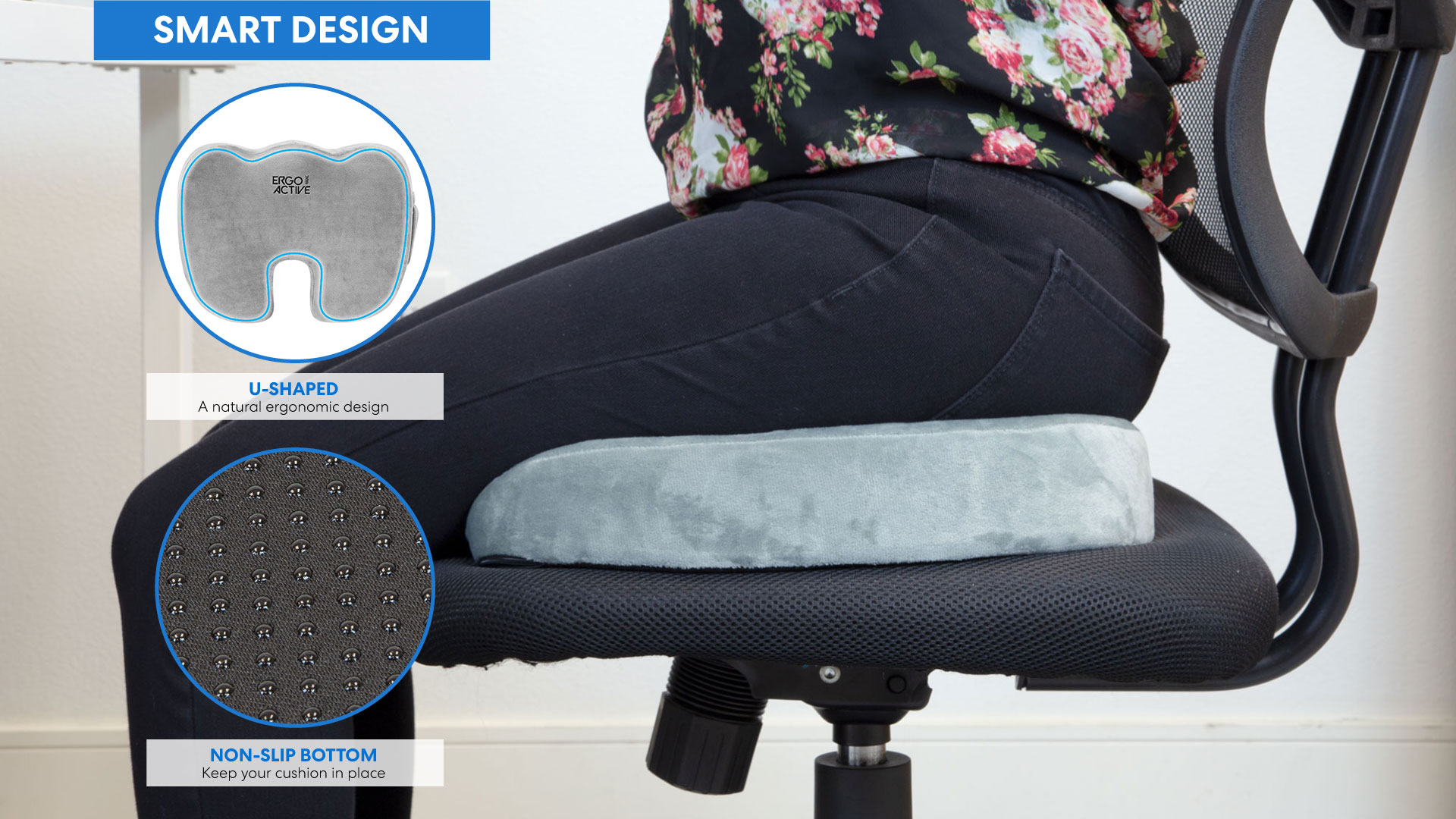
Table of Contents
If you suffer from sciatica pain, sitting for long hours at your desk can be a challenge. Prolonged pressure on the lower back and hips can aggravate the sciatic nerve, leading to discomfort, numbness, and even sharp pain that radiates down the legs. Fortunately, using a sciatica seat cushion for an office chair can help relieve pressure, promote better posture, and provide the support needed for long-term comfort.
Finding the best office chair cushion for sciatica ensures that your weight is evenly distributed, your lower back is supported, and your spine stays in proper alignment. In this guide, we’ll explore how sciatica cushions work, what to look for in a quality cushion, and the top-rated options available to make your workday pain-free.
1. How a Sciatica Seat Cushion Helps with Pain Relief
A high-quality seat cushion can make a significant difference in managing sciatica pain. Here’s how:
Reduces Pressure on the Sciatic Nerve
Sciatica cushions are designed to distribute weight evenly, preventing excessive strain on the lower back and buttocks.
Encourages Proper Posture
By promoting spinal alignment, a well-designed cushion helps prevent slouching, which can compress the sciatic nerve.
Supports the Coccyx & Lower Back
Many cushions feature a coccyx cutout or contoured design to relieve pressure from the tailbone, a common source of lower back discomfort.
Improves Blood Circulation
Sitting for too long in an unsupportive chair restricts circulation. A memory foam or gel cushion enhances blood flow, preventing stiffness and numbness.
Enhances Overall Comfort
Whether you’re at your desk or working remotely, a well-cushioned seat transforms an ordinary chair into an ergonomic seating solution.
2. Key Features to Look for in the Best Office Chair Cushion for Sciatica Pain
When choosing the best seat cushion for office chair for sciatica, consider the following features:
- Material Quality – Memory foam and gel cushions provide durable, long-lasting comfort. Look for high-density foam that retains its shape.
- Ergonomic Design – A coccyx cutout or orthopedic contouring is essential for targeted pain relief.
- Breathability – A ventilated or mesh cover helps prevent heat buildup and ensures airflow.
- Non-Slip Base – A good cushion should stay in place, preventing constant adjustments.
- Portability – If you switch workstations or travel, a lightweight, easy-to-carry cushion is a great option.
Now, let’s explore the best office chair cushions for sciatica pain available today.
3. Best Sciatica Seat Cushion for Office Chairs
3.1. Mount-It! MI-1101 ErgoActive Memory Foam Seat Cushion
The Mount-It! MI-1101 ErgoActive Memory Foam Seat Cushion is designed for maximum comfort and lower back support. It features a high-density memory foam core that molds to your body’s natural curves, relieving pressure from the sciatic nerve and promoting proper sitting posture.
Why It’s Great for Sciatica Relief:
- Ergonomic design – Encourages neutral spine alignment.
- Memory foam core – Retains shape while providing pressure relief.
- Portable and versatile – Works for office chairs, car seats, and wheelchairs.
- Washable cover – Easy to keep clean for long-term use.
Best For: Those looking for an affordable yet effective memory foam cushion for all-day support.
3.2. Mount-It! MI-1201 ErgoActive Cool Gel Seat Cushion for Chair
The Mount-It! MI-1201 ErgoActive Cool Gel Seat Cushion is ideal for those who experience heat buildup while sitting. It features an advanced gel layer that helps regulate temperature, keeping you cool and comfortable during long hours at your desk.
Why It’s Great for Sciatica Relief:
- Gel-infused memory foam – Combines the pressure relief of memory foam with cooling gel technology.
- Reduces tailbone & lower back pain – Ergonomic contouring prevents excess pressure on sensitive areas.
- Non-slip base – Stays in place on your chair, preventing sliding or shifting.
- Breathable mesh cover – Enhances airflow for long-term sitting comfort.
Best For: Users who experience discomfort from heat retention and want a cooler, more breathable option.
3.3. ErgoFoam Orthopedic Donut Pillow
For those experiencing severe tailbone and sciatica pain, the ErgoFoam Orthopedic Donut Pillow offers specialized support that helps relieve pressure from the coccyx and lower spine. Unlike traditional seat cushions, this donut-shaped cushion is designed to eliminate direct contact with the tailbone, which is especially useful for post-injury recovery and prolonged sitting discomfort.
Why It’s Great for Sciatica Relief:
- Donut design – Provides targeted relief for tailbone pain and lower back discomfort.
- Chiropractor-recommended – Designed for spinal support and posture improvement.
- Soft yet firm memory foam – Ensures comfort without sinking too much.
- Breathable mesh fabric – Prevents sweating and keeps the cushion fresh.
Best For: Individuals dealing with chronic tailbone pain, post-injury recovery, or extreme sciatic discomfort.
4. How to Use a Sciatica Seat Cushion Effectively
To maximize the benefits of your best office chair seat cushion for sciatica, follow these simple steps:
- Position it correctly – Place the cushion on the back of your chair, ensuring your hips are slightly elevated.
- Keep your feet flat – Adjust your seat height so that your feet rest flat on the floor to maintain proper posture.
- Pair it with lumbar support – For even better comfort, use a lumbar cushion to support your lower back.
- Take breaks & stretch – Stand up and stretch every 30-60 minutes to keep circulation flowing and prevent stiffness.
For additional pain relief and posture improvement, consider choosing the best office chair for sciatica that offers ergonomic features to complement your cushion. Additionally, understanding the best sitting positions for sciatica can help you avoid nerve compression and stay comfortable throughout the day.
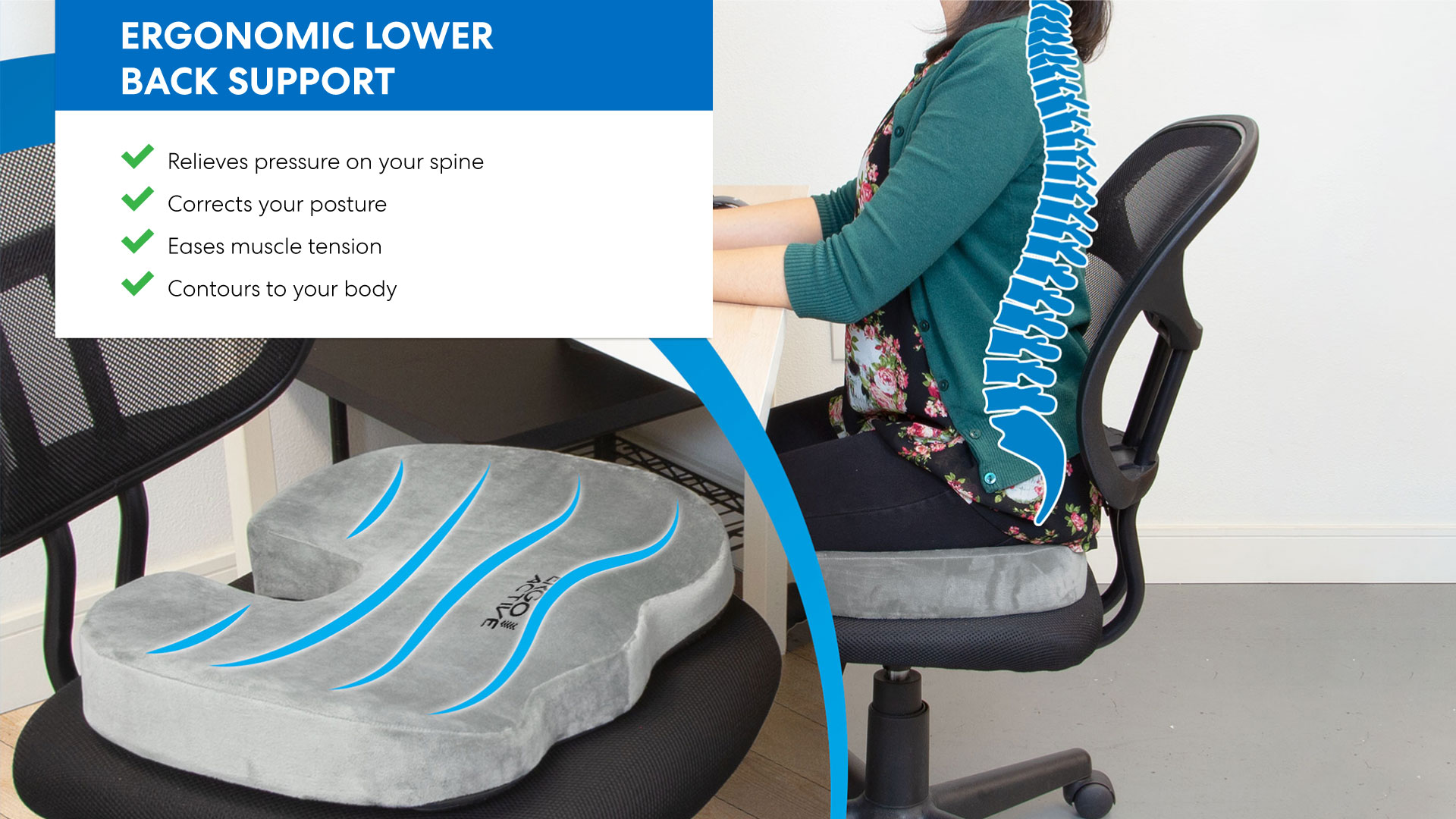
5. Additional Tips for Managing Sciatic Pain at Work
Using a sciatica seat cushion helps relieve pressure on the lower back and tailbone, but combining it with ergonomic practices and movement-friendly strategies can further reduce discomfort and improve spinal health during long work hours.
5.1. Choose an Ergonomic Chair for Proper Support
A chair with adjustable lumbar support, seat depth, and recline functions is crucial for maintaining a healthy sitting posture and preventing excess pressure on the sciatic nerve. A high-quality ergonomic chair provides spinal alignment and lower back relief, making it easier to sit for long periods without pain. If you struggle with chronic back discomfort, an ergonomic chair for back pain is designed with enhanced lumbar support to reduce strain. For those who need more flexibility, a reclining ergonomic chair allows for adjustable backrest angles, redistributing weight and easing spinal pressure.
5.2. Alternate Between Sitting and Standing
Remaining in one position for extended periods can worsen sciatica symptoms, leading to muscle stiffness and nerve compression. Alternating between sitting and standing throughout the day helps promote circulation and reduce nerve pressure. A standing desk provides the flexibility to switch between seated and standing positions, reducing stress on the lower spine. To maximize its benefits, follow best practices on how to use a standing desk properly to ensure optimal posture and spinal support. If you need additional height customization, a standing desk extension allows you to fine-tune your workspace setup for better ergonomics.
5.3. Engage Your Core with Active Sitting
Sitting for long hours without movement can increase sciatic nerve compression. One way to counteract this is by engaging in active sitting, which encourages small, continuous movements to activate core muscles and improve circulation. A stool for standing desks allows you to perch instead of sit statically, reducing lower back pressure and promoting movement. If you’re interested in learning more about active sitting benefits, explore how active sitting works to keep your body engaged while working. Additionally, these active sitting techniques can help you incorporate subtle but effective movements into your daily routine.
5.4. Incorporate Stretching to Relieve Sciatic Pain
Stretching is essential for reducing tightness in the lower back, hips, and hamstrings, which are commonly affected by sciatica. Simple seated and standing stretches can help improve flexibility and relieve nerve pressure. If you’re looking for gentle stretches you can do while seated, these chair stretches for sciatica offer an easy way to stay flexible without leaving your desk. For a more comprehensive approach, follow sciatica buttock pain exercises to target key muscle groups and enhance lower back support.
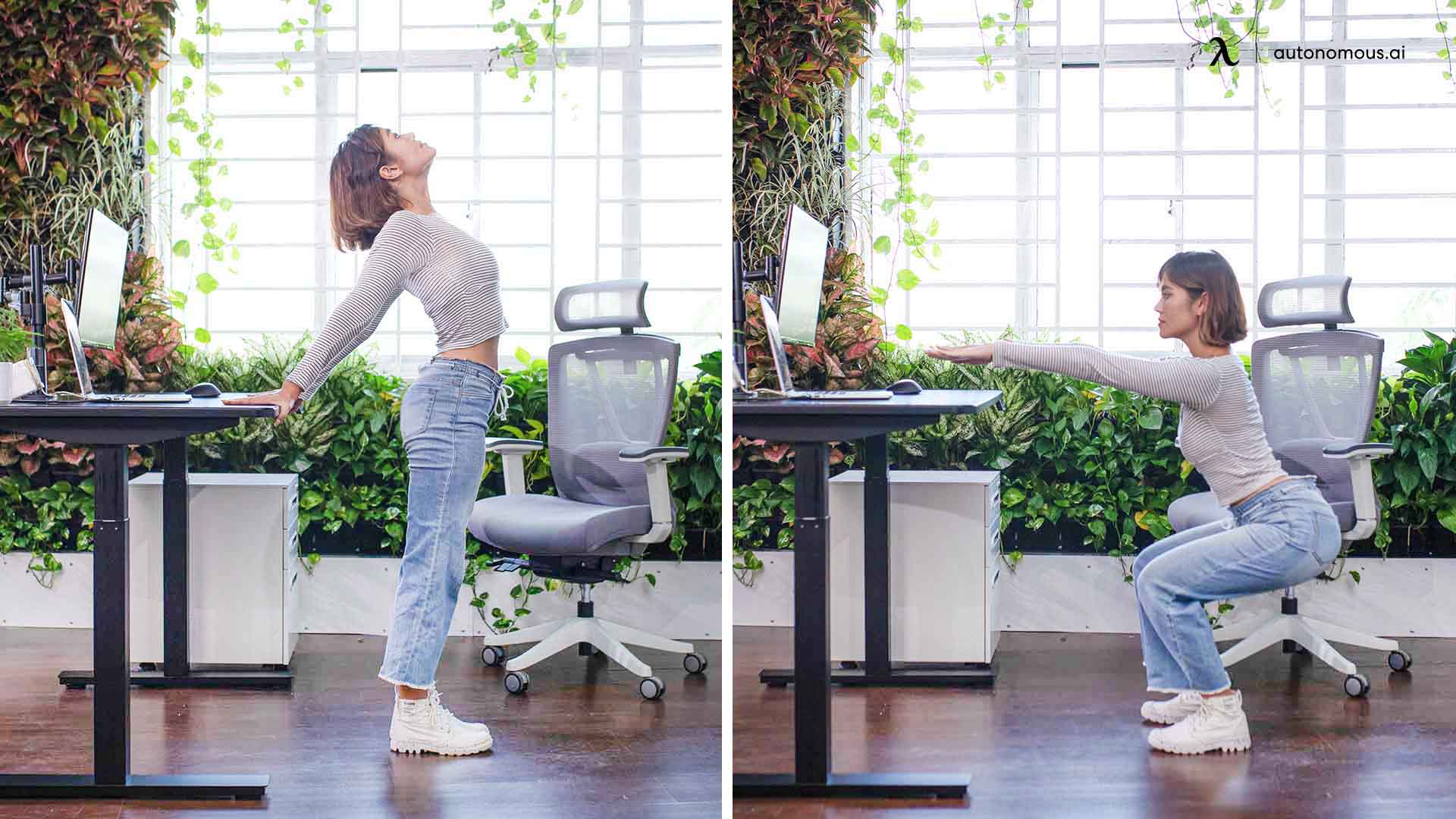
5.5. Optimize Your Sitting Position
Sitting in the wrong position can worsen sciatic pain by putting unnecessary stress on the lower back and hips. Finding the right posture for sciatic relief is essential for maintaining comfort and preventing further irritation. If you frequently shift positions while seated, an office chair that supports cross-legged sitting offers greater flexibility and ensures proper weight distribution. Additionally, understanding the best sitting positions for sciatica can help you find a posture that minimizes nerve compression and maximizes comfort.
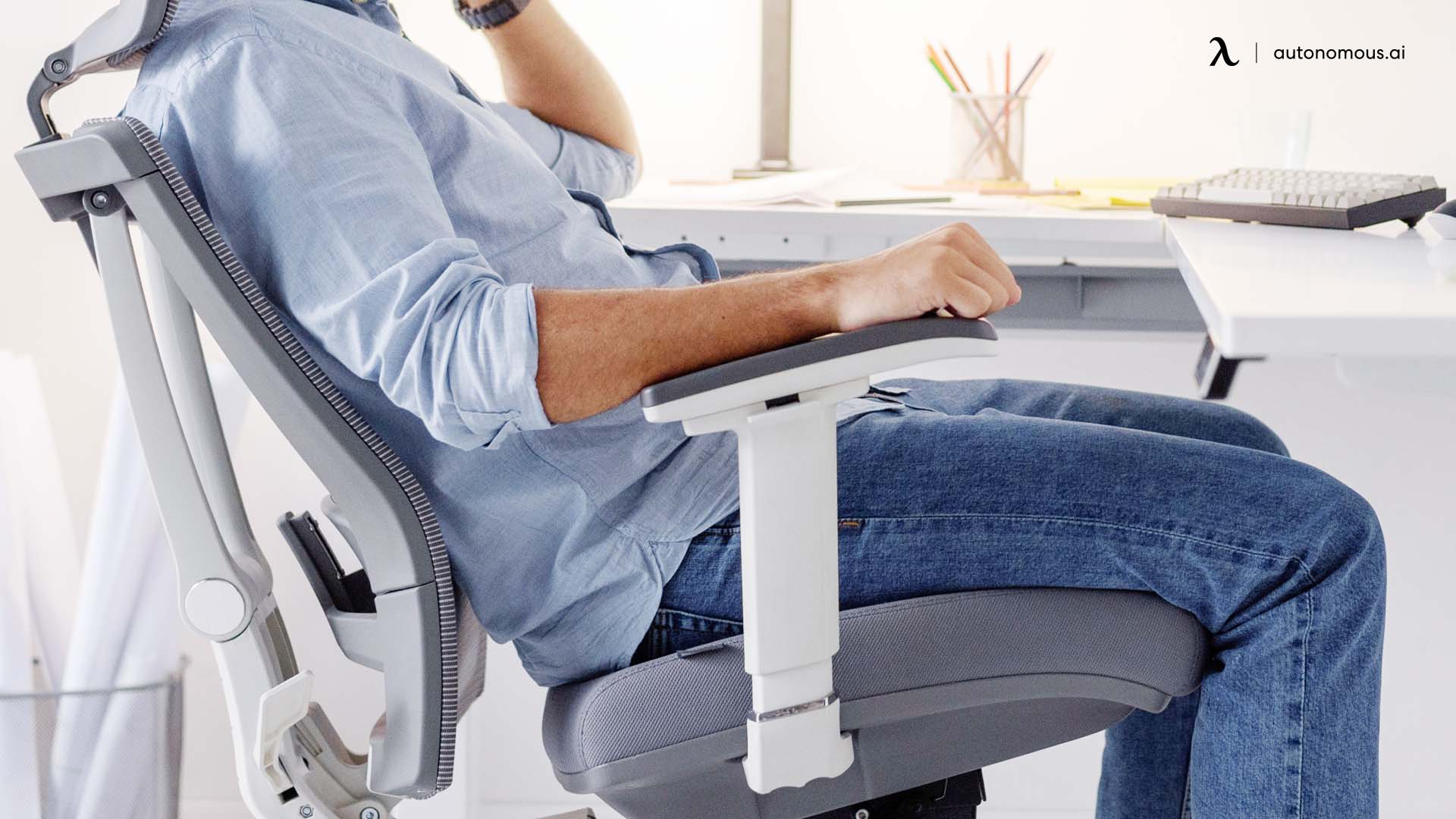
6. Conclusion
Finding the best seat cushion for an office chair for sciatica can make a significant difference in daily comfort and work productivity. Whether you choose memory foam for pressure relief, gel cooling for temperature regulation, or a specialized orthopedic cushion for targeted support, the right seat cushion can reduce pressure on the sciatic nerve, improve spinal alignment, and prevent discomfort during long hours of sitting.
In addition to using a sciatica cushion, investing in the right ergonomic chair can further enhance posture and lower back support. If you experience chronic discomfort, an orthopedic office chair for back pain can provide the lumbar reinforcement needed to alleviate strain. For those dealing with tailbone sensitivity, an orthopedic office chair for tailbone pain is designed to minimize coccyx pressure and promote healthier sitting habits.
If sciatic pain is accompanied by other conditions like hemorrhoids or SI joint pain, choosing the right ergonomic office chair can help prevent additional discomfort. An office chair for hemorrhoids can reduce seat pressure, while an office chair for SI joint pain can provide better pelvic alignment and lower body support.
Stay connected with us!
Subscribe to our weekly updates to stay in the loop about our latest innovations and community news!
Interested in a Link Placement?

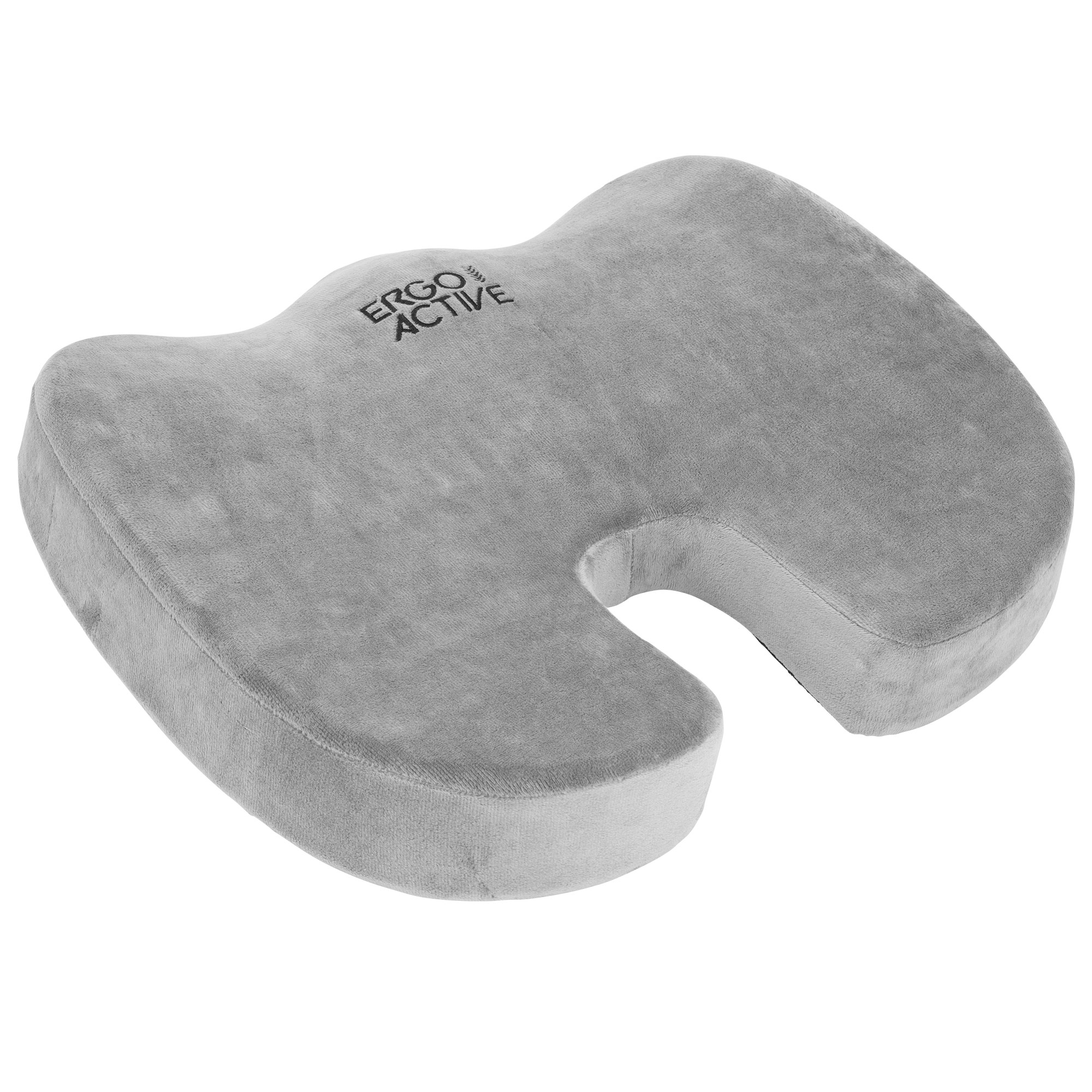

/https://storage.googleapis.com/s3-autonomous-upgrade-3/static/upload/images/product/galleries/2203.3022-ergoactive-cooling-gel-seat-cushion-ergoactive-cooling-gel-seat-cushion-1646131975893.jpg)

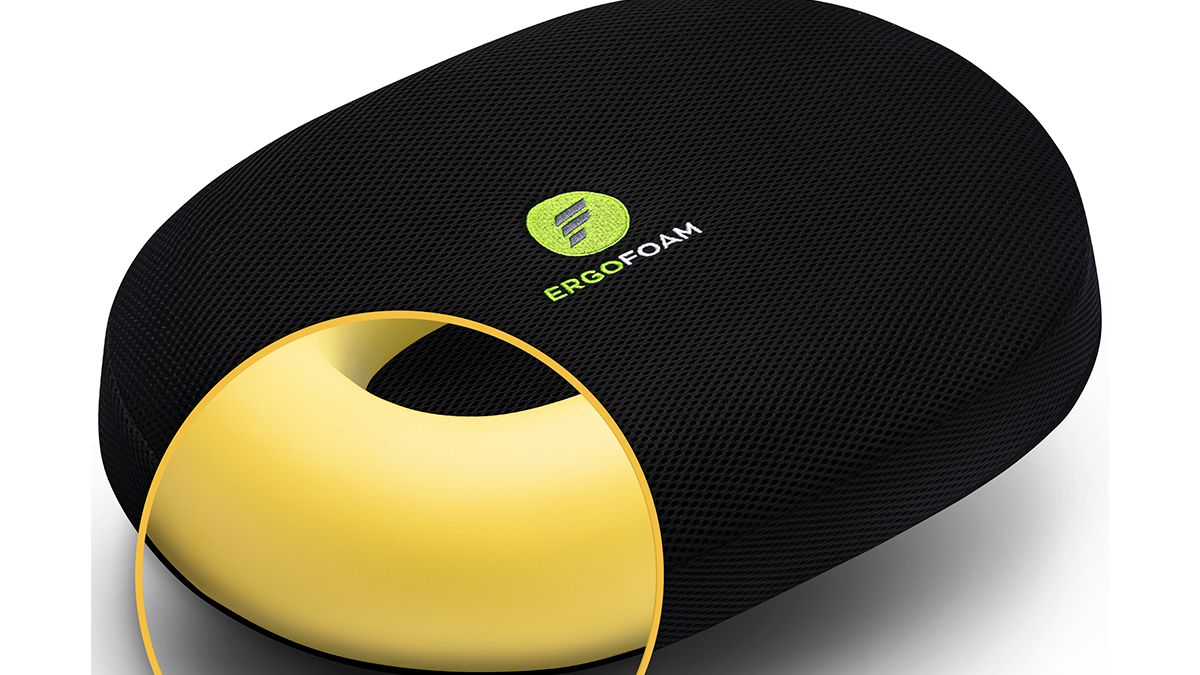

.webp)
.jpg)
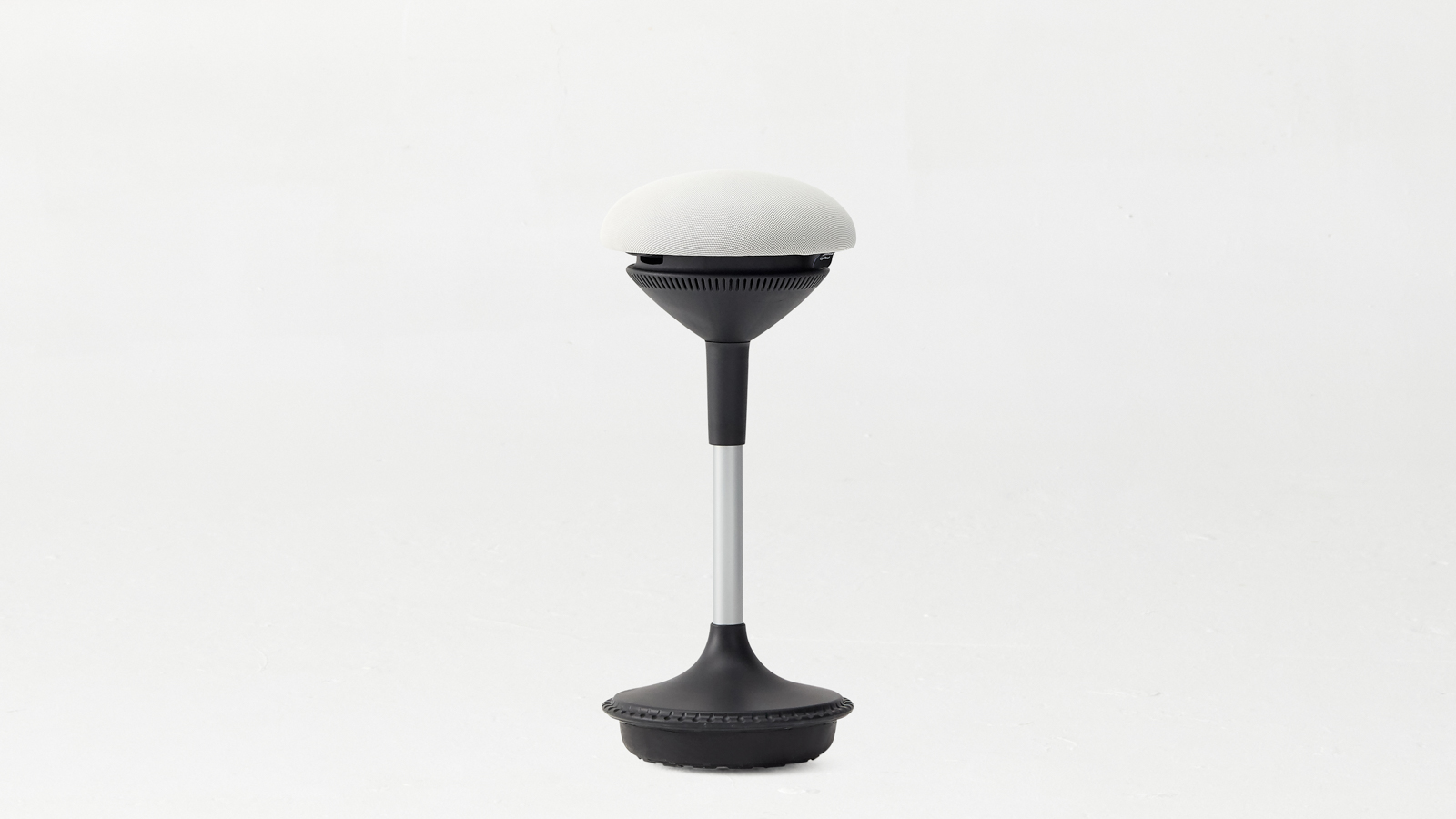



/https://storage.googleapis.com/s3-autonomous-upgrade-3/production/ecm/230914/bulk-order-sep-2023-720x1200-CTA-min.jpg)

/https://storage.googleapis.com/s3-autonomous-upgrade-3/production/ecm/230824/Amanda-8035f52a-7230-4c31-9bda-626fd7c392bf.jpg)